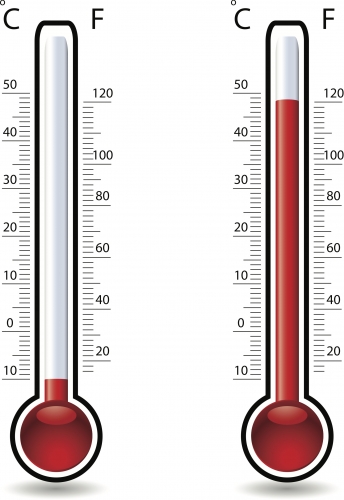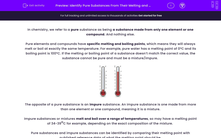In chemistry, we refer to a pure substance as being a substance made from only one element or one compound. And nothing else.
Pure elements and compounds have specific melting and boiling points, which means they will always melt or boil at exactly the same temperature. For example, pure water has a melting point of 0°C and its boiling point is 100°C. If the melting or boiling point of a substance doesn’t match the correct value, the substance cannot be pure and must be a mixture/impure.

The opposite of a pure substance is an impure substance. An impure substance is one made from more than one element or one compound, meaning it is a mixture.
Impure substances or mixtures melt and boil over a range of temperatures, so may have a melting point of 34-39oC for example, depending on the exact composition of the mixture.
Pure substances and impure substances can be identified by comparing their melting point with published reference data of what the melting point should be.
Think you can work out whether a substance is pure or impure just from its melting or boiling point?
Let's try some questions.









